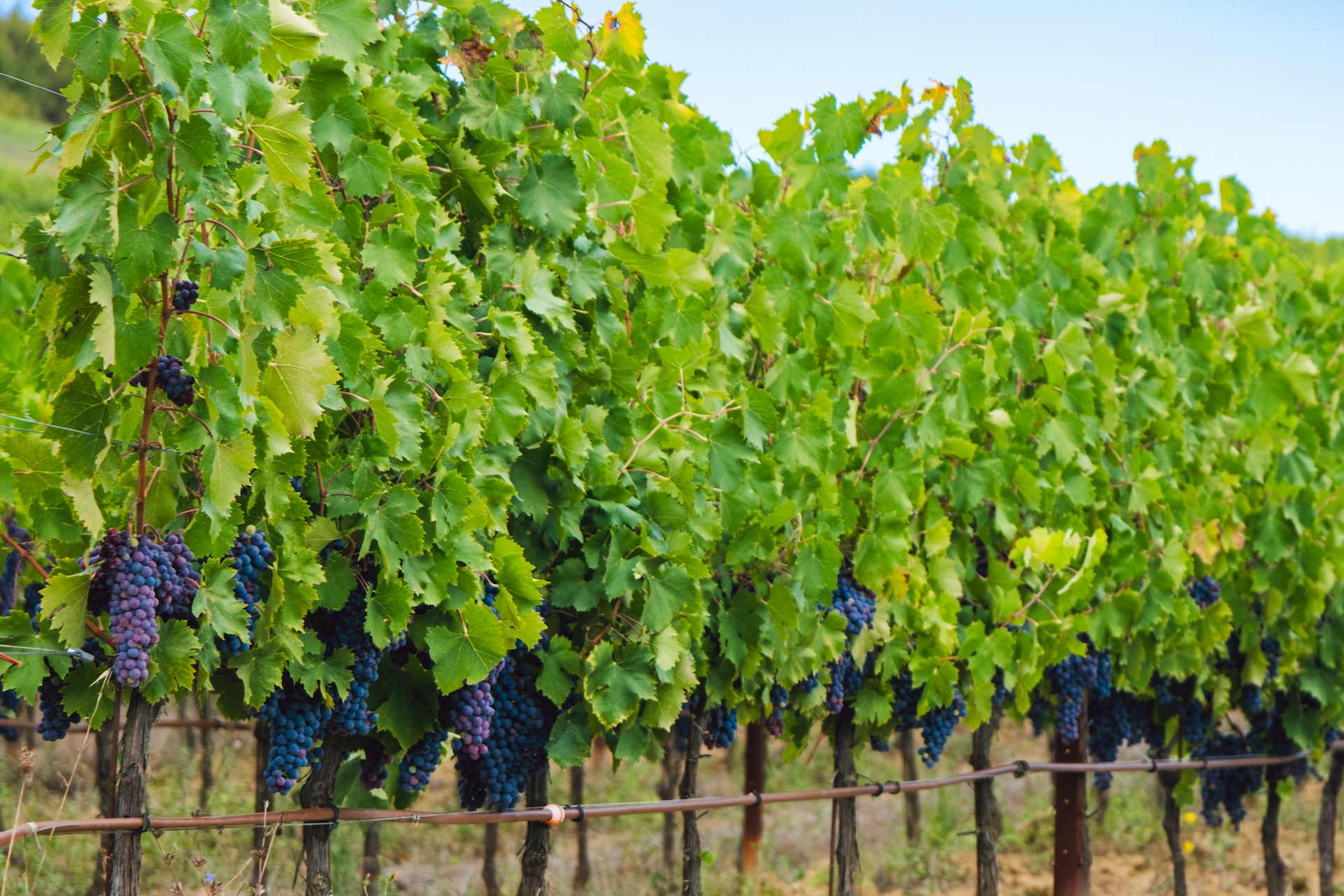Winemaking on Long Island in a changing climate
Vineyards in the North and South Fork are shifting towards a more resilient approach to winemaking as climate change casts growing conditions into doubt.
Alexa Robles-Gil • October 30, 2024

Winemaking around the world is adapting to climate change. Credit: Sue Winston via Unsplash
On an early morning, a vineyard on the North Fork of Long Island comes alive: A soft, golden light creeps over the horizon, casting long shadows over the vines. There’s an earthy smell in the air mixed in with the faint sweetness of ripening grapes. For Richard Olsen-Harbich, the director of winemaking at Bedell Cellars in Cutchogue in New York, each morning is crisp and fresh, but most of all, unique. As someone who’s been in the region for over 40 years, he’s felt the growing seasons for grapes become warmer and longer, and the looming threats of climate change getting closer.
For grapes though, it’s not all bad news, Olsen-Harbich says.“Our changing climate has been, more or less, a net benefit for North Fork wine growers.”
Vines are highly sensitive to weather. A study published in March showed that as wine production conditions change, so is the geography of wine. Extreme heat, droughts and even wildfires in traditional regions like California have affected wine production. And yet, as climate change threatens many winemaking regions around the U.S., like southern California, Long Island seems to be holding up.
Since the 1980s, growing seasons have been getting warmer and longer, allowing earlier ripening, greater fruit maturation and, consequently, some would say, better wines, according to Olsen-Harbich.
There’s space for adaptation for wine growers if warming is limited, the study says. But future scenarios are not similar in different regions and, as such, not all wines could improve with this warming, like those in Spain or Italy.
Long Island’s wine region is relatively new. Winemaking in the area didn’t begin until the early 1970s, but in the past 50 years the region has seen lots of growth: The vineyards produce more than half a million cases of wine annually and have received local and national awards. One of the reasons why winemaking in the region has grown is its climate resiliency, says Olsen-Harbich, with the surrounding waters of Long Island, especially in the North Fork, acting as a temperature buffer.
As growing seasons get longer and warmer, there’s more potential for late-ripening grape varieties like Cabernet Sauvignon and Petit Verdot. Vineyards like Bedell Cellars used to harvest these varieties in early November, but they are now coming in the third week of October with higher ripeness levels.
“I believe these varieties can grow in importance for our quality red wine programs on the North Fork,” says Olsen-Harbich.
Around the world, many places are experiencing a shift in winemaking. Some places are seeing vineyards pop up where they hadn’t before, like Norway, or a boom in vineyards, like in the United Kingdom. But even if climate change seems to be beneficial for grapes, “the long-term outlook may be less optimistic,” says Olsen-Harbich.
One of the reasons is the more frequent and severe droughts that increase the need for more irrigation. With an increase in severe droughts and heatwaves, 90% of traditional coastal and lowland winegrowing areas in Spain, Greece, Italy and Southern California could be gone by the end of the century, according to the study published in March.
Erratic rainfall can also result in more unpredictable and intense rainfall patterns. That’s the case in not only the North Fork of Long Island but for the South Fork as well.
The varieties of grapes in the South Fork could potentially change due to more intense rain events, says Larry Perrine, president of Channing Daughters Winery. Thin-skinned varieties, like Pinot Noir, he says, are going to become a thing of the past.
A thin skin and a tight cluster (meaning that grapes are closer to each other) can cause the berries to split and rot with intense or erratic rainfall. These grape varieties might end up being replaced by thicker-skinned grapes with looser clusters, says Perrine.
“That’s the preferred architecture and quality of a grape variety to be successful here,” he says. And the one that might adapt and survive in the long term.
“We have had to overcome many environmental factors over the years in our cool maritime climate,” says Olsen-Harbich, “and I’m quite sure we will handle these issues as well and persevere.”